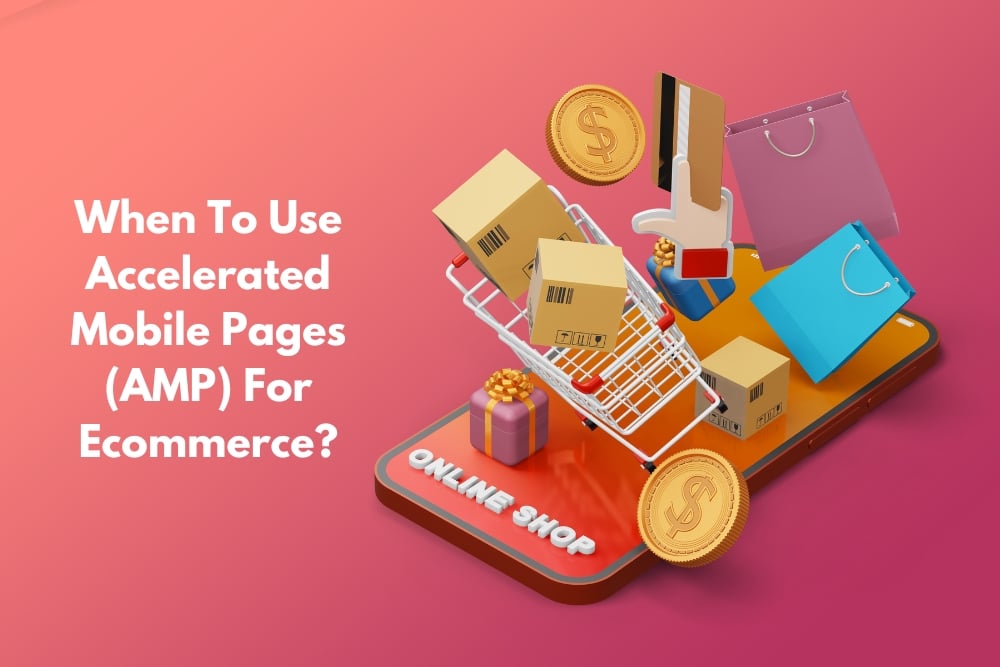In a world that’s become increasingly mobile, businesses are racing to make their websites as mobile-friendly as possible. The need for speed is paramount when it comes to mobile browsing, and Accelerated Mobile Pages (AMP) have emerged as a powerful tool to meet this need. If you run an ecommerce store, you might be wondering when and if you should use AMP. In this article, we’ll explore what AMP is, whether it’s right for ecommerce, its benefits, and how you can implement it successfully with the help of SEO services. Additionally, we’ll discuss best practices for AMP and how to measure its success.
What is Accelerated Mobile Pages (AMP)?
Before diving into the ecommerce context, let’s start with the basics. Accelerated Mobile Pages (AMP) is an open-source initiative by Google aimed at creating web pages that load quickly on mobile devices. The core idea behind AMP is to strip down web pages to their essential elements, removing unnecessary scripts and code that can slow down loading times.
AMP achieves its speed by employing three key components:
- AMP HTML: This is a streamlined version of HTML, which prioritises fast loading. It enforces some restrictions on the use of HTML tags and provides a set of custom AMP-specific tags.
- AMP JavaScript (JS): Instead of allowing custom JavaScript, AMP relies on its own library for interactive elements. This ensures a smooth and optimised user experience.
- AMP cache: Google maintains a secure Content Delivery Network (CDN) for AMP, which caches and delivers AMP pages quickly. This further boosts loading times.
Should you use AMP for ecommerce?
The decision to use AMP for your ecommerce site hinges on various factors. AMP is particularly beneficial in scenarios where speed and user experience are critical. However, it’s not a one-size-fits-all solution, and there are certain cases when you might want to think twice about implementing AMP for your ecommerce site.
When to use AMP for Ecommerce:
- Product pages: AMP is ideal for product pages as it ensures that potential buyers can quickly access the information they need. Faster loading times on these pages can result in higher conversion rates.
- Content-heavy pages: If your ecommerce site includes a blog or other content-heavy sections, using AMP for these pages can significantly improve the user experience.
- Mobile traffic dominance: If a substantial portion of your traffic comes from mobile users, implementing AMP is a no-brainer. Google rewards mobile-friendly sites in its search rankings, making AMP a powerful ally in SEO.
When Not to Use AMP for Ecommerce:
- Highly customised pages: If your website relies heavily on intricate design and custom features, implementing AMP can be challenging. It may limit your ability to showcase your brand and unique selling points.
- Limited resources: Implementing and maintaining AMP can be resource-intensive. If you have a small team or budget constraints, you may need to prioritise other optimisation efforts.
- Non-critical pages: Not every page on your ecommerce site requires the speed and optimisation that AMP provides. Consider whether the benefits of AMP outweigh the time and resources required.
What are the benefits of AMP for ecommerce?
Now that you have an idea of when to use AMP for ecommerce, let’s explore the advantages it brings to the table.
- Improved user experience: The lightning-fast loading times of AMP pages enhance user experience. Visitors are more likely to stay on your site, explore products, and complete purchases.
- Higher conversions: Speed is directly linked to conversions. Faster page load times reduce bounce rates and increase the likelihood of users making a purchase.
- SEO benefits: Google prioritises mobile-friendly sites in its search rankings. Implementing AMP can give your ecommerce site a significant SEO boost, resulting in higher visibility and more organic traffic.
- Lower bounce rates: Slow-loading pages often result in high bounce rates, but AMP helps mitigate this issue. Visitors are more likely to stay and engage with your site.
- Increased visibility: AMP pages are indicated in mobile search results, with a lightning bolt icon. This eye-catching symbol can attract more clicks and traffic to your site.
How can SEO services help you implement AMP for ecommerce?
Implementing AMP for ecommerce can be a technical challenge, and that’s where SEO services come into play. SEO experts can guide you through the process, ensuring that your AMP pages are not only fast but also optimised for search engines.
Here’s how SEO services can assist in the AMP implementation:
- Technical expertise: SEO professionals are well-versed in the technical aspects of AMP. They can help with the correct implementation of AMP HTML and AMP JS, as well as troubleshoot any technical issues.
- Mobile SEO optimisation: AMP is just one facet of mobile optimisation. SEO services can ensure that your entire mobile strategy aligns with best practices, making your site more SEO-friendly.
- Content optimisation: SEO experts can assist in optimising content for AMP pages, ensuring that they maintain their effectiveness while adhering to AMP restrictions.
- Tracking and analytics: Implementing AMP should not be a one-time effort. SEO services can set up tracking and analytics tools to monitor the performance of your AMP pages and make necessary adjustments.
- Ongoing maintenance: Keeping AMP pages up-to-date and optimised is crucial. SEO services can handle ongoing maintenance, saving you time and effort.
What are some best practices for AMP for ecommerce?
To make the most of AMP for ecommerce, it’s essential to follow best practices. Here are some guidelines to keep in mind:
- Prioritise product pages: Implement AMP on your product pages first. These are the pages where speed matters the most, and where you’re likely to see the most significant impact on conversions.
- Maintain a consistent look: While AMP enforces some design restrictions, you can still maintain a consistent look and feel with your non-AMP pages. This helps reinforce your brand identity.
- Test thoroughly: Ensure that your AMP pages work seamlessly on a variety of devices and browsers. Thorough testing is crucial to catch and address any issues.
- Utilise structured data: Implement structured data to enhance your search results with rich snippets. This can improve click-through rates and drive more organic traffic.
- Optimise images: Compress and optimise images to reduce page load times. Large images can significantly impact performance.
- Monitor analytics: Regularly review your AMP performance through analytics tools. This will help you identify areas for improvement and track the impact of your AMP implementation.
How can you measure the success of AMP for ecommerce?
The success of your AMP implementation can be assessed through various metrics and Key Performance Indicators (KPIs). Here’s how to gauge the effectiveness of your AMP pages:
- Page load speed: Monitor the load times of your AMP pages. Compare them to non-AMP pages and ensure that they are consistently faster.
- Bounce rate: Check the bounce rate on AMP pages compared to non-AMP pages. A lower bounce rate indicates that visitors are engaging with your content.
- Conversion rate: Measure the conversion rate on AMP product pages. If it’s higher than on non-AMP pages, it’s a strong indicator of success.
- Organic traffic: Track the increase in organic traffic from mobile devices. A boost in organic traffic signifies improved visibility and search rankings.
- Revenue and sales: Analyse the impact of AMP on your overall revenue and sales. A positive correlation demonstrates the tangible benefits of implementing AMP for ecommerce.
Conclusion
When considering whether to implement Accelerated Mobile Pages (AMP) for your ecommerce site, carefully assess your specific business needs and the nature of your content. While AMP can significantly enhance user experience, improve SEO, and boost conversions, it’s crucial to weigh the potential challenges and limitations. By following best practices, leveraging the expertise of SEO services, and monitoring key performance metrics, you can make the most of AMP for your ecommerce venture. Remember, in the fast-paced world of ecommerce, every second counts, and AMP could be the key to gaining that crucial competitive edge.
If you’re ready to supercharge your ecommerce business in the mobile era, Nifty Marketing Australia is your trusted partner. Whether you’re looking to harness the power of Accelerated Mobile Pages (AMP) to boost your website’s speed and user experience, optimise for mobile SEO, or enhance your online visibility, our team of experts is here to assist. Take the first step towards a faster, more successful ecommerce journey. Contact us today to explore how we can tailor our services to your unique needs and navigate the intricacies of AMP, ensuring your online store stands out in a competitive digital landscape. Your future success in ecommerce starts here with Nifty Marketing Australia.


